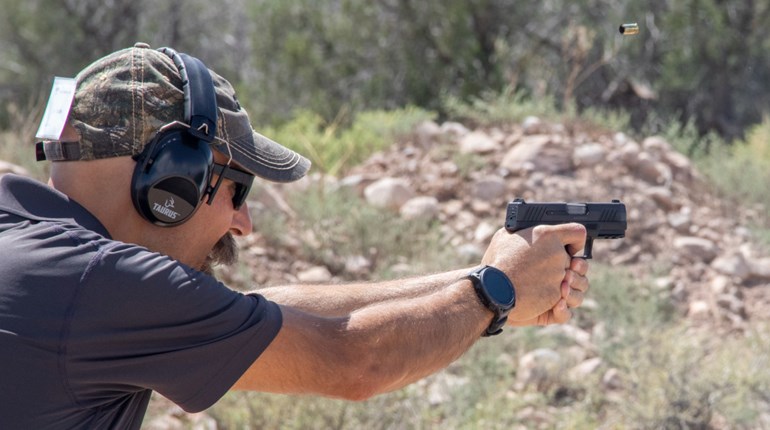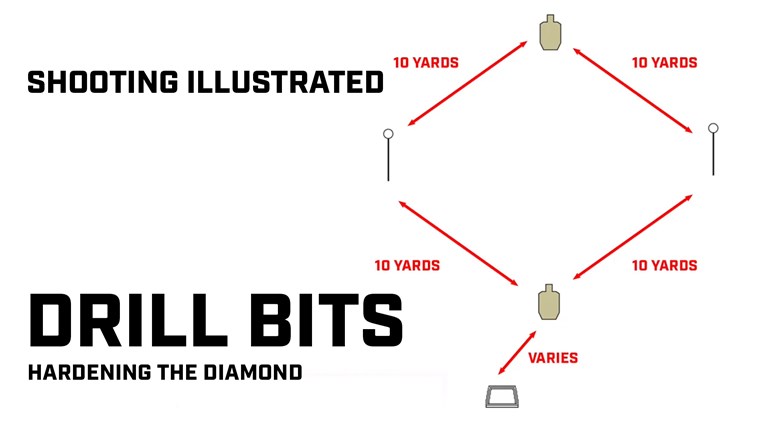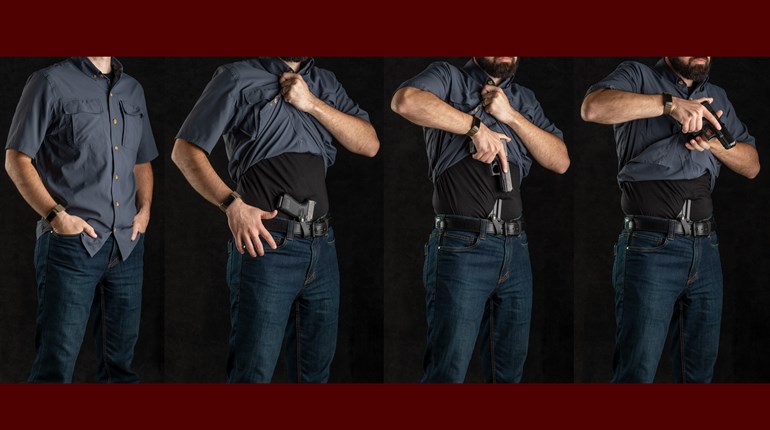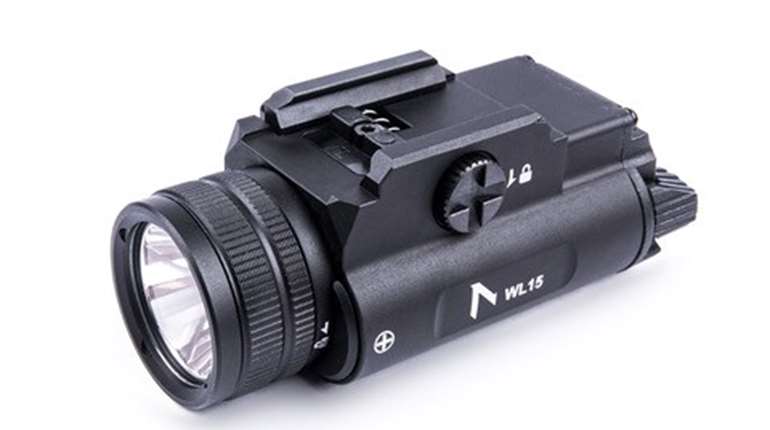
This article, "Stayin' Alive," appeared originally as a Handbook article in the July 2017 issue of Shooting Illustrated. To subscribe to the magazine, visit the NRA membership page here and select Shooting Illustrated as your member magazine.
Be it a terrorist attack, home invasion, active shooting or other undesired event, violent physical attacks on individuals who are unaware and unprepared for them are, sadly, becoming the new normal. Those who are aware and prepared are concerned about self-defense and protecting their family. What separates the prepared from the unprepared? Mindset, skills and confidence.
Mindset
Personal security is exactly that—personal. However, as a professional self-defense instructor teaching worldwide, the single most common mindset I run into is “It will never happen to me.” Most people’s outlook on the subject is: “It didn’t happen to me yesterday, it hasn’t happened to me yet today, so it won’t happen to me tomorrow,” which reinforces this mindset.
The second most common mindset is, “Someone else will handle it. That’s what we pay first-responders for—it’s their job.” Most people in our society believe that if they are caught in a violent physical attack, the cavalry will ride over the hill and save the day. Nothing could be further from the truth.
The mindset you rarely find is: “Personal security is my responsibility.” Of the above three, which one do you think will serve you best in matters of self-defense? You guessed it.
Skills and Confidence
If you are a police officer, you know your success in the new normal, and that of your partner, is dependent upon your skills and confidence (gained by applied skill). If you’re a protective agent, your ability to protect those in your charge is based on these same skills and confidence. The very same holds true if you are concerned about self-defense and the protection of your family. The only way to gain skill is through training.
The most elite military units in the world know that training is what makes an effective operator. As a federal-service provider for Naval Special Operations Command, it was my job to train U.S. Navy SEALs in specialized skills. What I took away from that unique experience was when SEALs are not out on assignment, they are training. Furthermore, training is what separates those with the highest skills from those without.
The purpose of training is to gain technical skill and build personal confidence. Skill without confidence is just as ineffective as having confidence with no skill to back it up. In other words, you don’t want your mouth writing checks that your skills can’t cash.
Confidence is built by applying your skills repeatedly until they are second nature. An example of this is tying your shoes. Odds are you’re very confident in making the knot, know which lace goes first and so forth—it happens effortlessly, because you’ve been doing it almost as long as you’ve been able to walk. Riding a bike is another example.
Skill and confidence. If ever there was a preparatory solution for the new normal, it is these two aspects. Training is paramount. All skills are derived from training, and the adage holds true that repetition—the mother of all skills—breeds confidence.
In the world of self-defense and personal security, there are two categories of skills needed by professionals to keep themselves and their protectees (anyone you want to keep safe) out of harm’s way: soft skills and hard skills.
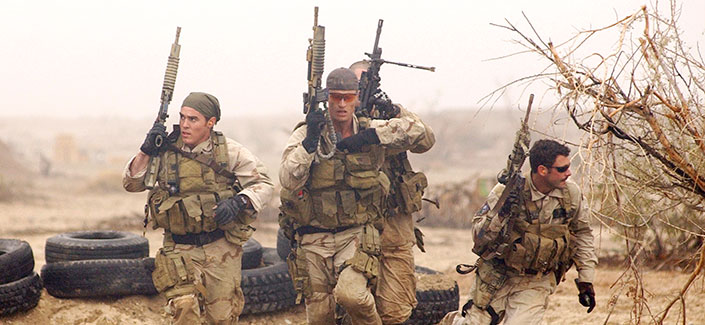
Soft and Hard Skills
Most people purchase a firearm and keep it in a drawer, a safe or even carry it concealed, thinking of it as a lucky rabbit’s foot that will ward off all evil in the new normal. For some shooters carrying concealed, this is the extent of what it takes for self-defense against a violent physical attack—simply having a gun. Other folks may decide to get in shape and buy a gym membership.
The fact of the matter is that physical strength, firearms and the skills to use them make up only 10 percent of your overall personal-security solution. Your core capability to protect yourself and those with you are divided into hard and soft skills.
Hard skills are your physical capabilities that directly apply to your physically surviving personal combat (i.e. hand-to-hand combat, firearms proficiency, defensive driving). The end product of physical training, these hard skills are gained by development of hand-eye coordination, weapon handling and marksmanship. Without hard skills, you could not physically respond to a violent threat. Hard skills, by their design, are reactive.
Soft skills, by contrast, are proactive. Utilizing your most powerful weapon—your mind—you can be trained to observe, orient, decide and act appropriately to avoid or mitigate an active threat, before having no other choice but to defend against it using your hard skills.
Self-Defense is 90 Percent Situational Awareness
Bad things happen to good people and soft skills are your ability to hear it, see it, smell it coming and do something about it proactively—to step out of harm’s way before the need to go to hard skills.
Soft skills are gained by awareness-based training, to include increasing your situational awareness via appropriate mindset and your ability to recognize a threat. Without soft skills, you wouldn’t be able to see a threat coming and would have no other choice but to rely on your hard skills.
When it comes to self-defense, only 10 percent of managing a threat requires those hard skills. The initial 90 percent requires soft skills.
Your mind is at your disposal 24/7. It doesn’t require bullets or batteries, and it can be trained to ensure your personal security by developing your soft skills. How can you gain these critical skills? By understanding interpersonal conflict and knowing how to recognize a threat.
Interpersonal Conflict
The word “aggression” per Merriam-Webster, means “hostile, injurious, or destructive behavior or outlook especially when caused by frustration.” The etymology of the word aggression comes from the ancient Latin aggredi, which means “to attack.”
In modern psychology, human aggression refers to a range of behaviors that can result in both physical and psychological harm to oneself, other people or objects in the environment. This type of social interaction centers on harming another person, either physically or mentally. The expression of aggression can occur in several ways, including verbally, mentally and physically. Physically, human aggression is a dangerous and harmful form of behavior. Given the new normal, its incidence in social interaction is alarmingly high.
Physical human aggression can be measured in scale from lowest to highest intensity, referred to as the Scale of Human Aggression. At its mildest physical expression, human aggression can be categorized by what is commonly called a scuffle.
Triggered by verbal insults, challenges, or similar combination of confrontational communication, a scuffle sits at the bottom of the Scale of Human Aggression. You may likely observe this physical expression in the form of finger-pointing, grabbing of collars, shoving or pushing.
Usually accompanied by shouting or emotionally charged language, a scuffle is often attributed to the resulting impulse of motivated frustration, and usually dissipates as quickly as it ignites. A scuffle is generally squelched by those nearby, or even by the perpetrators themselves unwilling to take it to the next level. Other than bruised ego, there is little to no bodily injury resulting from a scuffle.
The next step up from a scuffle is a fight. The iconic barroom brawl, two kids fighting after school or a fight between players during a game represent typical examples of this mid-level physical expression of human aggression. The purpose of the quintessential fight is to determine dominance—who is the alpha. A fight can result in physical injury ranging from a minor injury to waking up in an intensive care unit two days later.
Topping off the very highest Scale of Human Aggression is personal combat. Here, you are literally fighting for your life using all the self-defense skills you can muster. Usually involving weapons such as guns or knives, your adversary is trying to kill you, and it’s either you or him/them—only the victor survives.
Far more intense than a scuffle or a fight, personal combat minimally results in one or more combatants landing in intensive care with a very high probability of death or permanent bodily injury. When it comes to personal security, your greatest physical risk is that raised in personal combat.
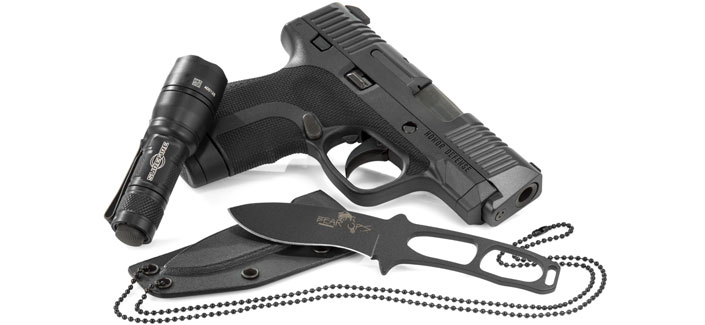
Threat Recognition for Self-Defense
To identify a threat, you must be able to read your environment—which includes events and the people around you—and glean relevant information to determine if there might be something potentially harmful to you lurking about.
Regardless of your gender, background, political affiliation or personal belief, at birth you were equipped with a couple of organic tool sets to help you read your immediate environment as to detect or identify a threat. This equipment includes:
• Your five senses: sight, sound, touch, taste and smell.
• Your sixth sense: intuitive hit or gut feeling.
How can we use these organic tools and further develop them into applicable threat-recognition soft skills for self-defense?
Using Your Five Senses
Using your eyes, you can observe people and events around you. You can see body language, cues, nonverbal signals and vignettes or scenarios unfolding, such as a couple arguing or a mom scolding her kid(s). You can use your ears to listen for screeching tires, explosions, gunfire or people screaming. You can use your nose to detect smoke, gas or other potentially dangerous odors. You can feel the change in temperature with your skin, such as standing next to fire or blast percussion. You can taste ash, pepper spray or other airborne particles.
Each piece of this incoming information can be grouped into two categories for self-defense: Event Indicators and Threat Indicators.
Event Indicators
Event indicators are those activities which you can observe that are visual cues as to what’s going to happen next in your environment. For example, in traffic, if you observe someone pull their foot off the brake and move it toward the gas pedal, this is a visual indicator that the car is about to move faster. If someone moves their hand toward a doorknob, it is a visual indicator that the door is about to open.
We see thousands of event indicators every day. However, when an event indicator gets your attention and makes the hair on the back of your neck stand up—such as a closed fist or someone giving you the social finger or hairy eyeball—it is then called a threat indicator.

Threat Indicators
Bad things don’t happen to good people out of the blue. They are a gradual progression of human aggression and precursors to violence. The key to self-defense and preventing a threat from progressing into an undesired event is to first identify threat indicators.
Such indicators are often your only visible clues or observable pre-attack behaviors that something bad is about to happen. Although they may sometimes be subtle, these observations can provide enough information for you to orient to your surroundings, make your decision based on updated information and then act on that decision.
Using your Sixth Sense for Self-Defense
Some people call it a sixth sense or a gut feeling. Sometimes called a premonition or intuitive hit, it’s where you “just know” that something isn’t quite right. It’s the most fine-tuned of the early-warning self-defense tools you have on board, and it’s something you can’t afford to ignore.
Think of a time when you “just knew” someone was looking at you from across a room or from a car parked next to you at a red light, and when you looked, you found it was true. Or that time you were just thinking about someone with whom you hadn’t had any contact for a long time, and they suddenly called you out of the blue. It’s these intuitive hits that provide you with the earliest possible warning of imminent danger—a warning that should not be ignored.
Threat Indicators can be anything unusual—things you wouldn’t expect to see, such as body language, nonverbal signals, a behavior that piques your interest or that danger feeling. If something just isn’t right, seems out of place, doesn’t look right or doesn’t feel right, then it’s probably not right.
Armed with an appropriate mindset, knowing how it applies to the Scale of Human Aggression and your ability to recognize a threat all contribute to your soft skills. The combination of your soft and hard skills, plus the confidence that comes from their repetitive application, ensure your self-defense in the new normal.













